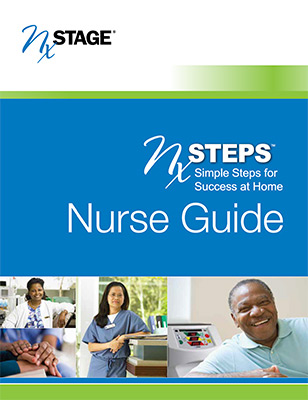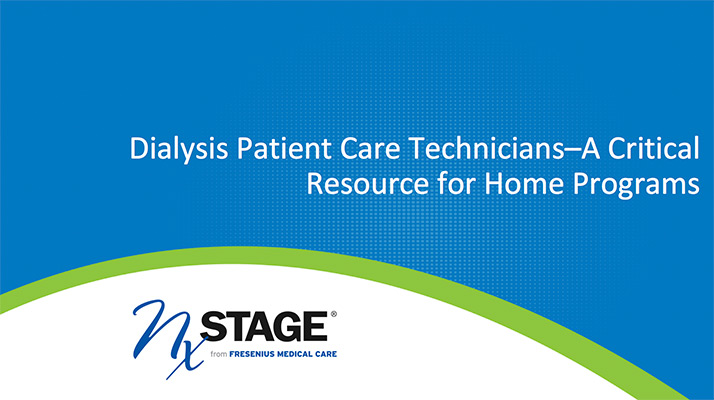Area of Focus 4
MONITOR AND GET ACTIVELY INVOLVED Detailed Results
The fourth and final category identified in the four pillars of success involves monitoring and intervention. It is important to consider what happens after a patient has been successfully trained. For many patients the hardest part of home therapy lies in the first 90 days they are at home. Closely monitoring their successes and challenges at home helps identify those that might be at risk of discontinuation.
One of the potential solutions may be respite care. Respite care that is offered as part of the patient’s dialysis journey may help avoid patient and/or care partner burnout.
Based on Medicare claims data analysis we know patient discontinuation is 3X higher in patients who have been hospitalized during the prior month of home therapy. Admissions were typically due to fluid overload or infection which were common, but may be preventable with better volume management and infection control.1
Nx2me Connected Health is another option that can help facilitate both active monitoring and intervention. Flowsheets are sent electronically after each treatment and tracked and managed If patient parameters are captured outside their norm the report is flagged and the clinician can take timely action.
Whether or not your facility has the ability to use a connected health platform, such as Nx2me, there are other opportunities to monitor and intervene that can be used.
Frequent Follow-up
- When patients are trying something new, try having a nurse support them for first-time
- Perform weekly calls to check-in and reinforce you are there to help support them even though they are now treating at home
Active Intervention
- At sight of missed treatments or an infection, touch base and set-up additional training or calls as needed.
- Reinforce training with the team member that makes the most sense, this could be a PCT to reinforce aseptic technique or cannulation, or a Bio-med to help them troubleshoot a system question.
Review some of our additional resources to help encourage active participation and patient management including steps nurses can take to reinforce training or help patients during those first 90 days home.
The reported benefits of home hemodialysis (HHD) may not be experienced by all patients.
The NxStage System is a prescription device and, like all medical devices, involves some risks. The risks associated with hemodialysis treatments in any environment include, but are not limited to, high blood pressure, fluid overload, low blood pressure, heart-related issues, and vascular access complications. When vascular access is exposed to more frequent use, infection of the site, and other access related complications may also be potential risks. The medical devices used in hemodialysis therapies may add additional risks including air entering the bloodstream, and blood loss due to clotting or accidental disconnection of the blood tubing set.
Home hemodialysis with the NxStage System during waking hours may not require a care partner, provided a physician and a qualified patient agree that solo home hemodialysis is appropriate. Patients performing nocturnal treatments are required to have a care partner. Care partners are trained on proper operation and how to get medical or technical help if needed.
Certain risks associated with hemodialysis treatment are increased when performing solo HHD because no one is present to help the patient respond to health emergencies. If patients experience needles coming out, blood loss, or very low blood pressure during solo HHD, they may lose consciousness or become physically unable to correct the health emergency. Losing consciousness or otherwise becoming impaired during any health emergency while alone could result in significant injury or death. Additional ancillary devices and training are required when performing solo HHD
Certain risks associated with hemodialysis treatment are increased when performing nocturnal therapy due to the length of treatment time and because therapy is performed while the patient and care partner are sleeping. These risks include, but are not limited to, blood access disconnects and blood loss during sleep, blood clotting due to slower blood flow and/or increased treatment time, and delayed response to alarms when waking from sleep.
Patients should consult their doctor to understand the risks and responsibilities of performing these therapies using the NxStage System.
References
- Weinhandl E, Sanders M, Kraus M, Carver M. Strategies to optimize patient retention in home hemodialysis. Neph News Issues. 2019;22(8):18-21.




